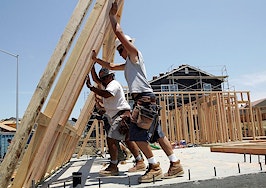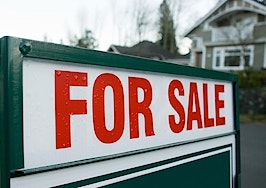As inventory remains low and buyer demand continues to intensify, the for-sale housing market this summer is sizzlin’ hot.
During July, the typical home value was up 4.5 percent year over year to $253,527, the fastest value rate increase since May 2019, according to Zillow.
“This spring’s housing soft patch is receding in the rearview mirror as we get a clearer picture of robust demand meeting remarkably low supply,” Jeff Tucker, Zillow economist, said in a statement. “Record-low mortgage rates and a record-high number of people in their early 30s are combining to fuel first-time buyer demand. Builders, acting on unprecedented confidence, are racing to meet demand, but supply remains well behind what’s needed. This lack of inventory, along with forbearance terms keeping unemployed homeowners in their homes, stands in stark contrast to the Great Recession, when excess supply and distressed sales brought down home values.”

Credit: Zillow
In 42 of the 50 largest U.S. metro areas, annual home value growth accelerated from June, with San Jose, California (up 2.1 percentage points), and Hartford, Connecticut (up 0.8 percentage points), leading the way.
From June to July, month-over-month home value growth increased from 0.4 percent to 0.48 percent, the largest one-month acceleration since May 2012.
The top 10 metro areas with the greatest home value year over year growth during July are as follows:
- Phoenix, Arizona: up 9.9 percent
- Memphis, Tennessee: up 7.9 percent
- Seattle, Washington: up 7.9 percent
- Charlotte, North Carolina: up 7.4 percent
- Indianapolis, Indiana: up 7.2 percent
- Salt Lake City, Utah: up 7.2 percent
- San Jose, California: up 7.0 percent
- Birmingham, Alabama: up 6.9 percent
- Milwaukee, Wisconsin: up 6.7 percent
- Cincinnati, Ohio: up 6.6 percent
As a result of increased market pessimism caused by high unemployment and a potential wave of evictions and foreclosures to come with no action yet on a second federal stimulus package, Zillow anticipates home value appreciation to slow to 3.6 percent over the course of the next 12 months.

Jeff Tucker | Photo credit: Zillow
“While the housing market has so far sailed through the headwind of high unemployment, risks remain,” Tucker said in a statement. “A slow economic recovery that keeps millions of Americans looking for work could dampen homebuying demand and may even lead to a wave of foreclosures when forbearance expires. This pessimistic possible outcome for 2021 has caused Zillow’s price forecast to shade down a bit.”
With national inventory down 28.4 percent year over year as of the week ending August 15, it’s no wonder home values are experiencing a boost for now. In all of the 50 largest metro areas inventory is down, but it’s taken the biggest hit in Riverside, California (down 46.5 percent); Baltimore, Maryland (down 43.8 percent); and Hartford, Connecticut (down 43.1 percent).
The rental market, on the other hand, has continued to show pains from the pandemic. During July, the typical year-over-year rent growth slowed to 1.2 percent, down from 3.9 percent in February, with the biggest hits taking place in New York, New York (down 2.6 percent); San Francisco, California (down 2.5 percent); and San Jose, California (down 2.2 percent).






